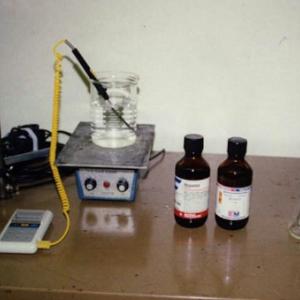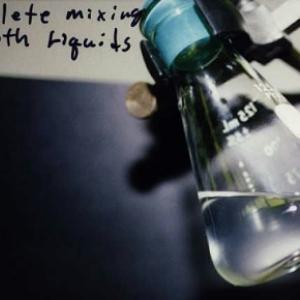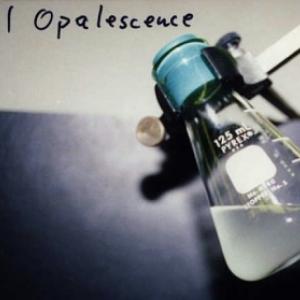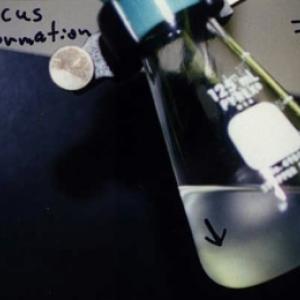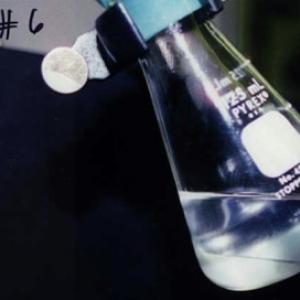College of Liberal Arts & Sciences
4C50.20 - Critical Opalescence
Critical opalescence is caused by a large change in the refractive index. In this experiment we mix hexane and methanol in the molar ratio of .435 moles to .665 moles respectively. Methanol has 40.45 ml / mole. Hexane has 130.55 ml / mole. This means that 17.60 ml of methanol and 85.51 ml of hexane will give you the .435 : .665 mole ratio. The critical opalescence will occur at 42.4 C. The easiest way to do this is to heat the mixture above 42.4 C. so that the mixture is clear and appears as one liquid. Let the mixture cool and observe the critical opalescence at the transition temperature. Depending on existing pressure and experimental conditions this may vary slightly from the 42.4 C reported in the literature. As the mixture continues to cool the two liquids will separate into distinct layers.
- Clarendon Press, "The Theory of Critical Phenomena", p. 1-13.
Disclaimer: These demonstrations are provided only for illustrative use by persons affiliated with The University of Iowa and only under the direction of a trained instructor or physicist. The University of Iowa is not responsible for demonstrations performed by those using their own equipment or who choose to use this reference material for their own purpose. The demonstrations included here are within the public domain and can be found in materials contained in libraries, bookstores, and through electronic sources. Performing all or any portion of any of these demonstrations, with or without revisions not depicted here entails inherent risks. These risks include, without limitation, bodily injury (and possibly death), including risks to health that may be temporary or permanent and that may exacerbate a pre-existing medical condition; and property loss or damage. Anyone performing any part of these demonstrations, even with revisions, knowingly and voluntarily assumes all risks associated with them.
